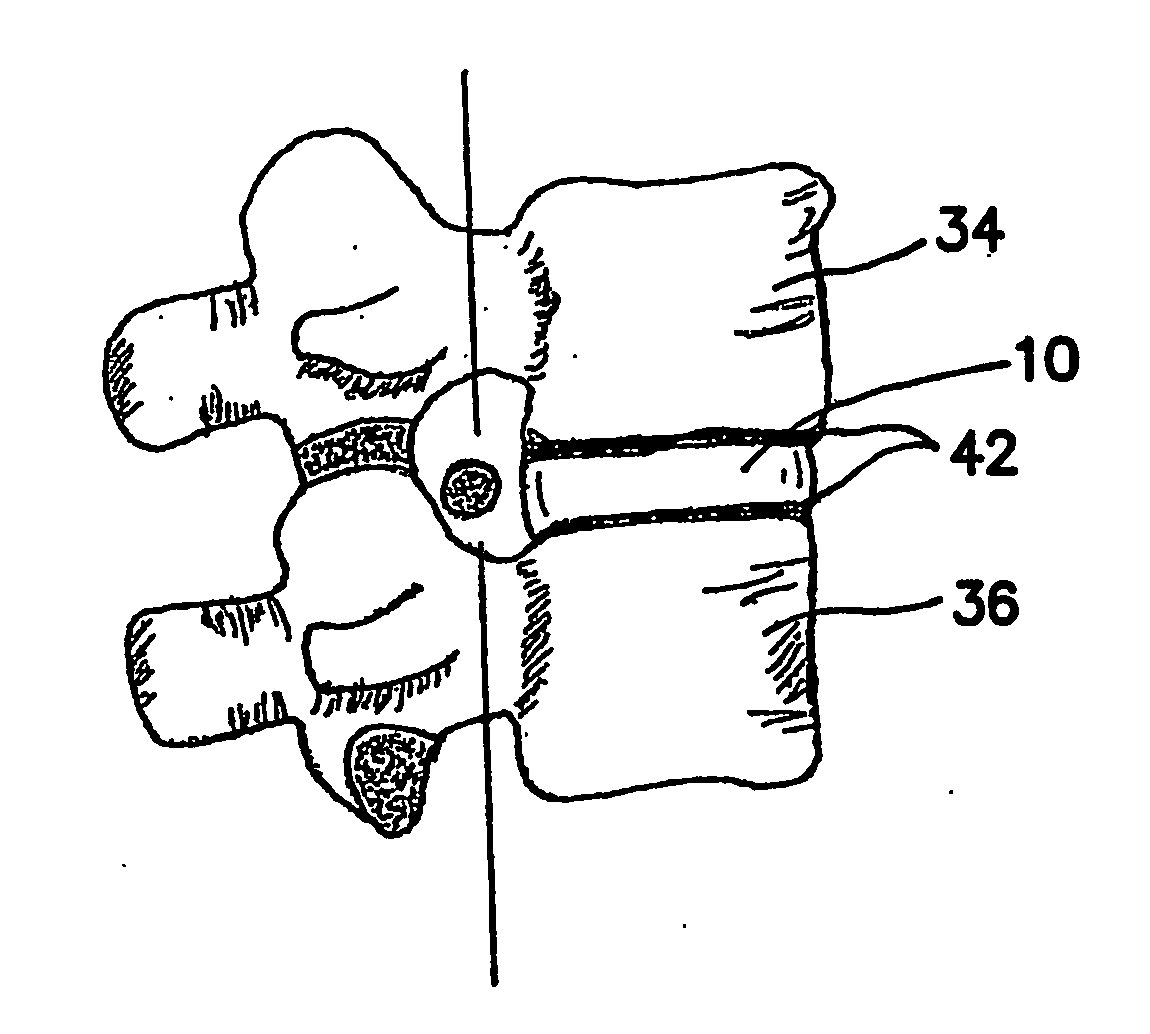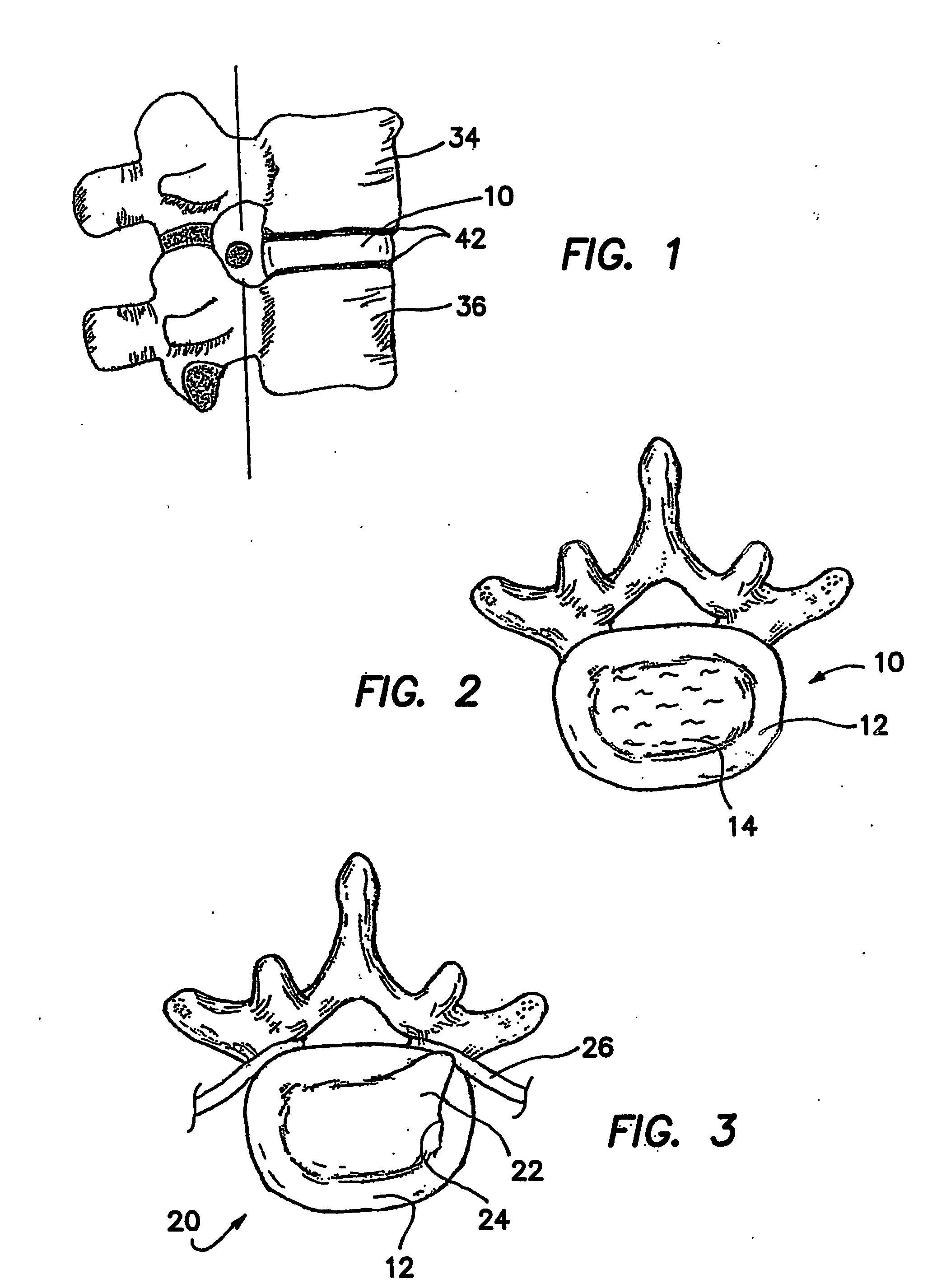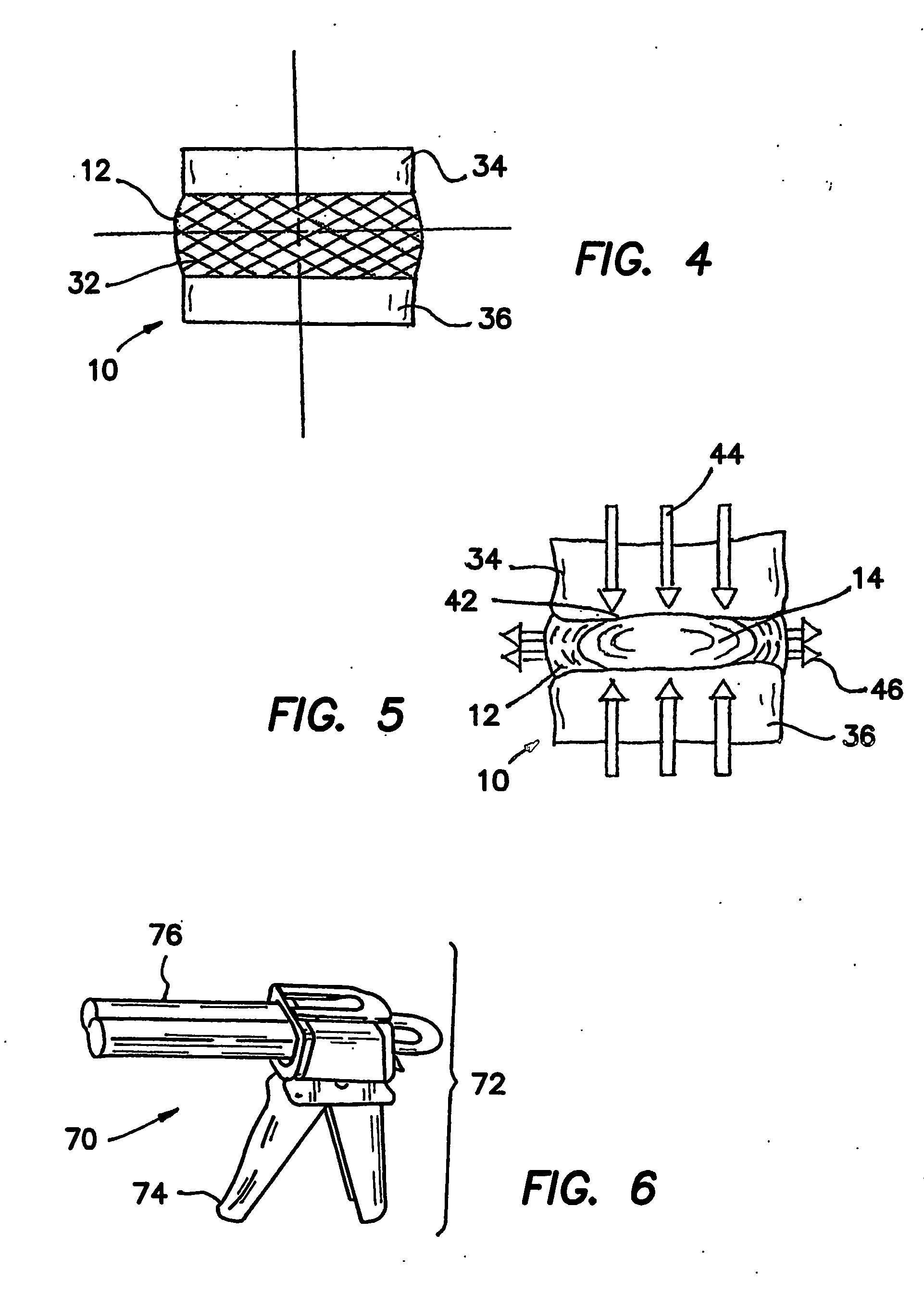Artificial nucleus pulposus and method of injecting same
- Summary
- Abstract
- Description
- Claims
- Application Information
AI Technical Summary
Benefits of technology
Problems solved by technology
Method used
Image
Examples
Embodiment Construction
[0057] The following is a list of reference numerals as used in the drawings of the present invention:
LIST OF REFERENCE NUMERALS
[0058]10 Intervertebral Disc [0059]12 Anulus Fibrosus [0060]14 Nucleus Pulposus [0061]20 Herniated Disc [0062]22 Herniate nucleus pulposus [0063]24 Anulus tear / fissure [0064]26 Compressed nerve [0065]32 Collagen fiber [0066]34 Superior vertebrae [0067]36 Inferior vertebrae [0068]42 Vertebral end-plate [0069]44 Compressive load [0070]46 Radial force [0071]51 Nucleus cavity [0072]52 Entry needle [0073]53 Obturator [0074]54 Access Cannula [0075]55 Obturator / cannula assembly [0076]61 Suction / aspirating catheter [0077]70 Mechanically actuated dispenser [0078]72 Body of dispenser [0079]74 Trigger of dispenser [0080]76 Plunger of dispenser [0081]80 Dual-chambered cartridge [0082]81 Chamber A of cartridge [0083]82 Part A of artificial nucleus pulposus [0084]83 Chamber B of cartridge [0085]84 Part B of artificial nucleus pulposus [0086]86 Cartridge tip [0087]90 St...
PUM
| Property | Measurement | Unit |
|---|---|---|
| Temperature | aaaaa | aaaaa |
| Temperature | aaaaa | aaaaa |
| Temperature | aaaaa | aaaaa |
Abstract
Description
Claims
Application Information
 Login to View More
Login to View More - R&D
- Intellectual Property
- Life Sciences
- Materials
- Tech Scout
- Unparalleled Data Quality
- Higher Quality Content
- 60% Fewer Hallucinations
Browse by: Latest US Patents, China's latest patents, Technical Efficacy Thesaurus, Application Domain, Technology Topic, Popular Technical Reports.
© 2025 PatSnap. All rights reserved.Legal|Privacy policy|Modern Slavery Act Transparency Statement|Sitemap|About US| Contact US: help@patsnap.com



